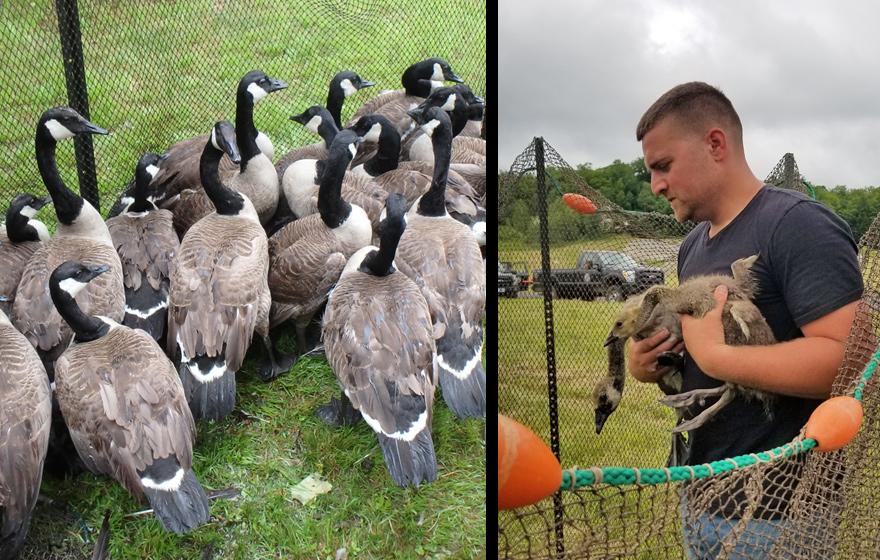- Division of Fisheries and Wildlife
Media Contact
Media Contact, MassWildlife

Video: Summer Geese Banding
Skip this video Summer Geese Banding.Perhaps no sound more clearly evokes an image of wilderness than the honking of migrating geese. Canada geese have passed through Massachusetts on their journeys to and from their arctic breeding grounds for centuries. Prior to the 1930s, it was unusual for geese to nest here, yet today in Massachusetts you can find Canada geese any time of the year. In fact, in some areas, people now feel there are too many geese! Why the change?
There are two different populations of Canada geese in Massachusetts. The first is the migratory population which passes through in the spring and fall. Massachusetts is one of many resting areas for these migrating birds. The second is the resident population: descendants of captive geese used by waterfowl hunters in the early 20th century. When live decoys were outlawed in the 1935s, many captive birds were released into the wild. With no pattern of migration, these geese began nesting here and are now present year-round. Today, MassWildlife manages Canada geese populations through an established management program, regulated hunting, and research.
Each summer, MassWildlife biologists capture Canada geese, band them, and collect data. During late June through July, most adult geese have molted (shed) their flight feathers and are unable to fly. Biologists set up a temporary corral, consisting of a long net hung on poles. Since the geese can’t fly, MassWildlife biologists can herd the flock into the corral by waving their arms and clapping. Staff look for geese on golf courses, parks, beaches, neighborhoods, and rural areas across the state. When geese are in the water, staff use canoes or kayaks to herd the flock into an area where they can be captured. Staff then band each bird and record their age, gender, and location and record numbers of previously banded birds. All this information then goes into the federal database at the Bird Banding Lab in Maryland. MassWildlife bands 800 geese each summer at 60 to 70 locations around the state. Such efforts, repeated over many years, result in the information required for biologists monitor and manage Canada geese populations over time.
As goose numbers increase throughout Massachusetts, so do problems, especially with goose droppings. After all, Canada geese produce between ½ pound to 1.5 pounds of droppings every day! MassWildlife urges residents to do their part to prevent problems with geese. The primary way is to avoid feeding them. Geese, ducks, and other wildlife tend to congregate wherever people feed them. Feeding encourages birds to stay in one place and build up flock sizes that the habitat can’t support, such as on golf courses, lawns, and beaches. You can learn more about more about Canada geese, what you can do prevent issues with Canada geese, and what MassWildlife is doing to manage geese in Massachusetts by visiting MassWildlife's webpage on Canada geese.
